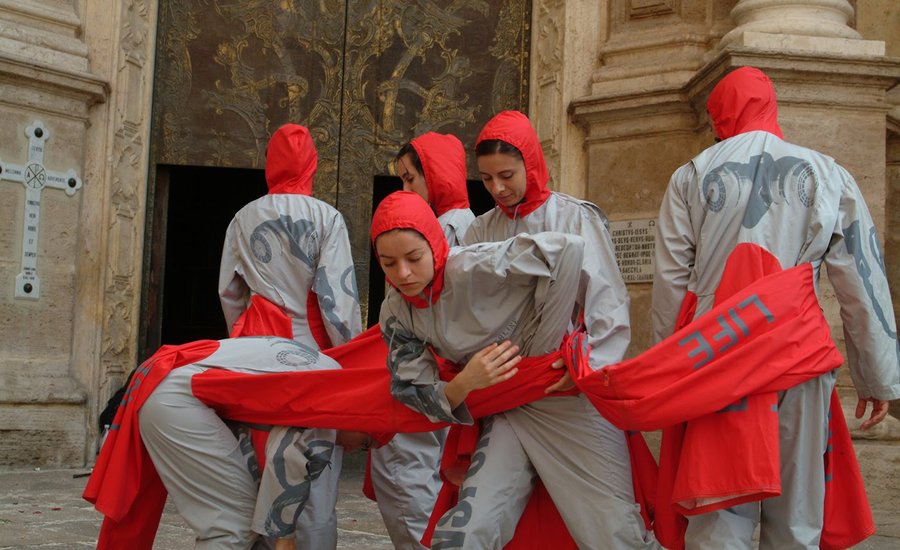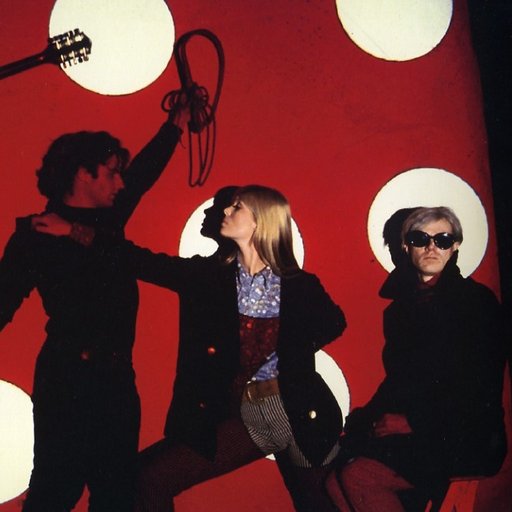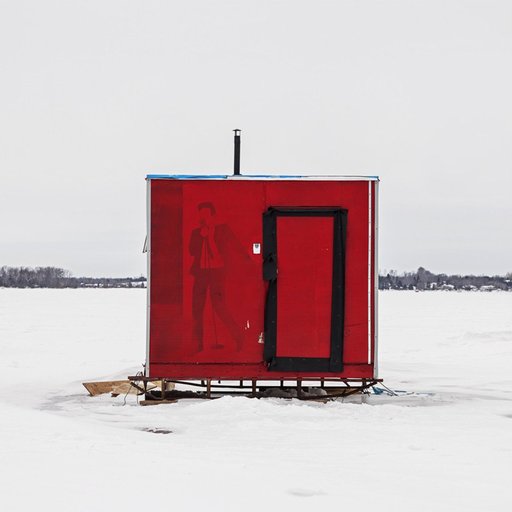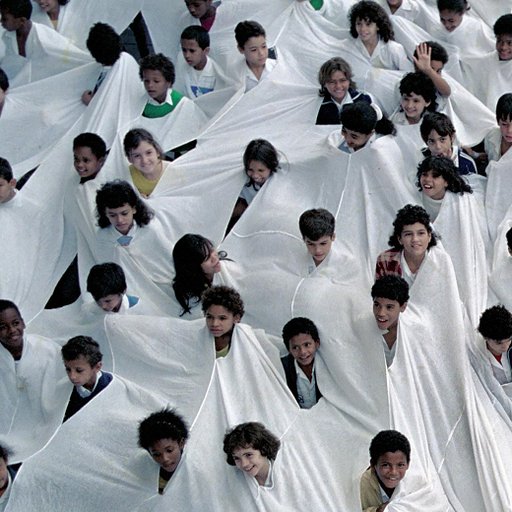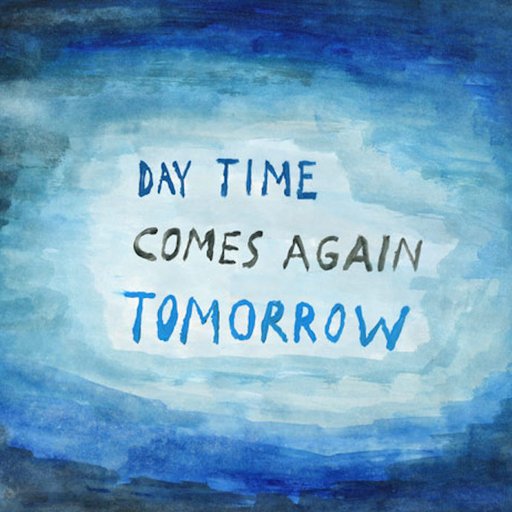Throughout art history, creatives have sought ways to have their work engage the public and offer poetic reflections on the realities of their day. For artists in the late '90s, that way was through open-ended audience participation in a practice curator and critic Nicolas Bourriard termed "Relational Aesthetics." With the advent of the internet and the establishment of globalization, artists sought a practice that could reflect and adapt to this modern status of interconnectivity. The feeling was that in this new world order, art could not truly be socially reflexive from within the confines of a gallery or museum—it needed to be out and participating in the real world. The practice makes the "theoretical and practical point of departure the whole of human relations and their social context, rather than an independent and private space."
Exemplary of this, English artist Lucy Orta's multi-disciplinary works exist to bridge the gap between art and functionality, combining architecture, fashion and social activism. The youngest woman to have an artist’s monograph published by Phaidon, Orta examines the social bonds within communities and the relationships between individuals and their environments. In the following conversation, Bourriard speaks with Orta about her four self-imposed rules for making useful art, her aversion to nihilistic or cynical art (she describes this as "art for art's sake"), and art-making as a proposal for alternative living.
...
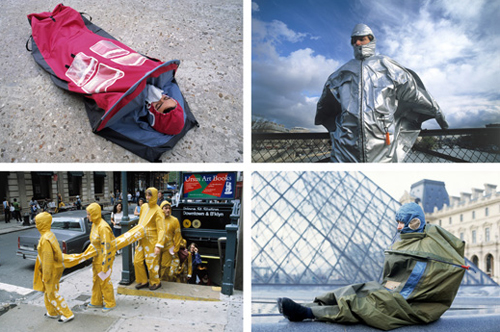 Refuge Wear Video Stills
Refuge Wear Video Stills
We met at the beginning of the 1990s, a time when artists were beginning to question art’s social usefulness in new terms. Artists such as Krisztof Wodiczko and Christine Hill made works for the homeless, for example. For artists including Rirkrit Tiravanija, Carsten Höller, Peter Fend or even Maurizio Cattelan, art was about working well within social reality, not just about finding a means of representing that reality. A debate arose: how can art have a direct effect on reality when it is mediated solely through galleries and the art system? The ambiguity between the actual usage of the work and its aesthetics creates an interesting problem: what part is shaping and what part is operational in these works that ‘function’? Let’s take for example your work, Refuge Wear (1993-96). Is the usage of this work integral to its form? In other words, can we speak of your work as a ‘functioning aesthetic’?
The context for my first work in the 1990s was the economic recession, resulting from the repercussions of the first Gulf War and the stock market crash. There was rampant unemployment, and you could feel the effects of such instability sweeping the streets. I was working as a design consultant for several fashion houses and having some financial difficulties myself. Although I could have remedied them relatively easily by taking on more design contracts, I felt that I needed to become more socially active and work creatively in a new visual medium.
 Identity + Refuge (1995)
Identity + Refuge (1995)
The very first objects I created were shown outside the art system in the form of "interventions," such as the Refuge Wear and Nexus Interventions in the Cité La Noue housing estate in Montreuil, east of Paris, or in the streets and abandoned outskirts of the city during Paris Fashion Week. The Identity + Refuge workshop (1995) with the residents of the Salvation Army was actually initiated by the director of the Cité de Refuge Le Corbusier shelter in Paris’ 13th district; he believed that art had an important role to play inside the social reality of the shelter and totally supported the exhibition, ‘Art Fonction Sociale!’ (Salvation Army Cité de Refuge, Paris, 1993).
These interventions and actions did not attract any real interest from the art network in the beginning. I came to the conclusion that I would have to be active in two camps: both "inside" in the museum and art centers—vitrines where I could confront and debate ideas—and "outside," on the street. In this way I could engage with "real life" situations and question the relationship between research and practice without making theoretical assumptions beforehand. My encounter with philosopher Paul Virilio in 1994 was also fundamental to where I chose to position my work. The social reality at the time was demoralizing; I realized that the street was the place to begin asking questions. It was here that the debate was heated and virulent.
Galleries and museums represent just a fraction of an active and complex system that I have put into place, and the work functions differently in each scenario. I have initiated an artistic production and a communication medium primarily by fabricating objects conscious that the forms cannot just represent reality. On the contrary, they should be active, reactive, and also function as catalysts.
 Fabulae Romanae - Dome Dwelling (2015)
Fabulae Romanae - Dome Dwelling (2015)
To go back to your question about what part is modelling and what part is operational, I try to work on four levels:
1. The work acts as a warning, an alarm bell or distress whistle to signal aspects of reality that the media ignore or simplify, before evacuating it completely.
2. The design innovations and the new materials I employ give the impression that they are operational, or functional. Refuge Wear, Survival Kits (1993-95), transformable and polyfunctional objects such as Citizen Platform (1997) or Processing Units (1999) are just some examples. Many manufacturers have approached me to re-appropriate such works into their own production lines.
3. The forms I model are poetic, and they raise questions. They are surprising, dream-like; maybe "science fiction." I employ détournements and metaphors—after all, they are art works.
4. Finally, and most importantly, each work or series acts as a release mechanism for a gradual transformation process. To become "operational," each work triggers another work via a network system of "acts." Each object or project forms a link in the catalyst chain.
 Life Guard N.I.O. 0307 (2003)
Life Guard N.I.O. 0307 (2003)
"Functioning aesthetic": the term seems right, and pertinent. Jorge [Orta's husband and creative partner] and I are researching notions of "operationability," and several projects could already be defined in these terms, the most successful being Opera.tion Life Nexus (2001). We are developing poetic actions closely linked to human, social, and economic developments. We oppose a nihilistic vision of "art for art’s sake." We are interested in an art form that crosses disciplines, integrating both the poetic and the functional. One of the most interesting consequences of this approach is my nomination, in 2002, as Head of a new Master’s Program, "Man and Humanity," at the Design Academy of Eindhoven. This is a direct outcome of the transversal projects and theories that we have been researching for several years.
You evoke the nihilism of "art for art’s sake." Isn’t this position similar to that of the Russian Constructivists after the October Revolution? At that time, for example, the critic Osip Brik, denounced Modernism as a bourgeois and socially useless art. Couldn’t certain non-functional works today indirectly turn out to be more "useful" than those that specifically aim at social efficiency? In other words, isn’t art always useful?
 Refuge Wear
Refuge Wear
Luckily, all points of view are permitted in art, leaving open multiple ways to invent alternatives according to each and every person’s own certitude. What bothers me in certain artistic intentions is a nihilistic air that often becomes a pose or a fashion, and the flippancy becomes a social reference. Cynicism becomes cool. Look at the lack of Utopian vision and the general level of apathy in youth culture today. Faced with manipulative globalization, how can one not react? I don’t want to respond with a complacent or compliant work. Art-making is profoundly emotional, an expression of hope, a proposal for alternative living. It’s a life project; it’s a commitment with yourself as well as with society.
In my work I do not restrict myself to ideas of functionality or non-functionality. Concepts such as "utility" or "social effectiveness" are too complex to be answered in a few words without further debate and reference to specific examples. I totally agree that non-functional art can be useful, such as the work of Shirin Neshat, Mona Hatoum, Kendell Geers, Andrea Zittel, Peter Fend, n55 or Rirkrit Tiravanija. An obvious example in my work would be the Nexus Architecture where fabric tubes act as a metaphor for creating a social alliance. I try to investigate many different art forms such as pilot enterprises, object-making, public interventions, interactive websites, workshops, museum installations, relational objects and educational programs; each of these functions in a different way, and can also be potentially operational in another. The projects have varying levels of effectiveness depending on the audience addressed.
Most artists seem to consider "the street" as a metaphoric space, a symbol or a backdrop for their social or political preoccupations: the city as a decorative element. Do you consider your practice to be a tentative move towards producing a specific urban "grammar?" How do you organize your work between the street and the gallery?
The city is not décor; it is a vital space for interaction and a hub for social activity, a vector for exchange and an ever-changing scenario in which I "intervene," employing new formats. In early investigations, such as the Refuge Wear and Nexus Architecture interventions, I utilized the street in an investigative manner, questioning the individual’s right to occupy public space rather than becoming subsumed by the architecture. By reclaiming public space, these projects sought to empower marginalized individuals and render them more visible.
 70x7 The Meal - Dieuze, France (2001)
70x7 The Meal - Dieuze, France (2001)
In more recent public works—such as the open-air fêtes, meals and picnics—I use the urban geography as a powerful tool to mediate dialogues between social groups. The buffet of surplus produce served up at the openings of All in One Basket (1997) and Hortirecycling Enterprise (1999) are a result of my dismay during French agricultural demonstrations. Each year tons of fruit are dumped onto the highways to protest against imported goods. My reaction was to act locally, and direct my demonstration of empowerment towards the tons of edible leftover produce, utilizing urban players in the Parisian street markets—vendors, clients, passers-by and cleaners—to create micro-community gatherings and discussion forums. The tasty dishes of surplus food prepared by a famous French chef in these public projects lead quite naturally to large-scale public picnics and open-air dinners, such as the 70 x 7 The Meal project in the French rural town of Dieuze (2001), with its 300 meter-long [985 ft.] table snaking down the main street. The whole town was involved in preparing this project. All demographic, social and religious groups then shared a meal, which assumed the role of social space.
I’m not sure what you mean by "grammar;" this term would imply to me a controlled set of signs or codes, but I hope that it’s more of a fluid language. Perhaps, however, it is a new discourse weaving in and out of different scenarios, moving from the public to the private, crossing over, raising questions, listening to different reactions and building from these responses into a nourishing experience.
RELATED ARTICLE: What Is Relational Aesthetics? Here's How Hanging Out, Eating Dinner, and Feeling Awkward Became Art











